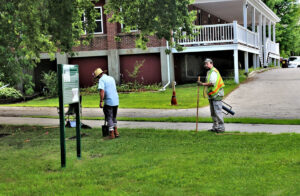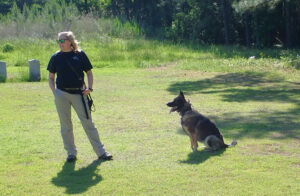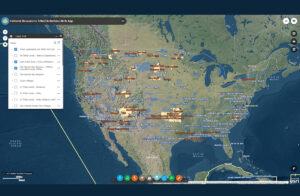CEMML’s cultural resources team offers expertise in managing the finite and non-renewable elements of cultural heritage. Our highly experienced team includes professional archaeologists, architectural historians, historic preservation specialists, GIS analysts, landscape architects, and indigenous consultation specialists.
Cultural Resources Management Services
Core Cultural Resources Services
- Management planning and technical support to ensure compliance with applicable federal and state legislation
- Antiquities Act
- National Historic Preservation Act
- Native American Graves Protection and Repatriation Act
- Archaeological Resources Protection Act
- Regulatory expertise, including support, coordination, and documentation.
- Survey, inventory, recordation, and evaluation of archaeological sites, historic buildings, sites, structures, objects, and landscapes.
- Creation and updating of Integrated Cultural Resource Management Plans.
- Tribal coordination, consultation, and collaboration, including Installation Tribal Relations Plans and identification and documentation of Traditional Cultural Properties.
- In-theatre cultural heritage training for the U.S. Armed Forces.
Historical Resources and Cultural Landscapes
- Historic building and cultural landscape surveys, inventories, and documentation.
- National Register and National Historic Landmark eligibility assessment and nominations.
- Condition assessments and treatment plans for historic buildings, districts, and landscapes.
Archaeology
- Inventory surveys for archeological resources.
- Archeological site mitigation and data recovery.
- Predictive modeling and resource risk assessment.
GIS/GPS/RS Technical Support
- Geographic Information System (GIS) needs assessment, planning, and implementation.
- Remote Sensing (RS) applications, including change detection analysis.
- Digital Elevation Model (DEM) development.
- GPS field data collection and data layer development.
- ESRI Story Maps research, design, and production.
Email Cultural Resources Management inquiries to cemml@colostate.edu.
Related Stories

CEMML archaeological survey explores early 20th century history of Fort McCoy
An archaeological survey conducted by CEMML personnel in the summer of 2022 was initially meant to investigate the creation of several hundred concrete tent pads at Fort McCoy, Wisconsin. Research into the tent pads, dating from around the early 20th century, also unearthed additional information about other possible known archaeological features and sites around what is referred to as “Old Camp McCoy.”

Canine detectives help locate long-forgotten burials at a Virginia military base
Mulberry Island, Virginia, the location of Joint Base Langley-Eustis, has a long history of human habitation, dating back 10,000 years. The area has more than 230 archaeological sites, including cemeteries with unmarked graves. CEMML, in partnership with the Fort Eustis Cultural Resources Program, is using human remains detection dogs to help identify unmarked burial sites to better understand, honor, and preserve the area’s rich history.

CEMML partnership helps ensure Native American voices are heard in military planning
Much of the roughly 26 million acres that the Department of Defense oversees nationwide was once occupied by Native American tribes. Military installations are legally required to consult with interested tribes when carrying out projects that affect natural and cultural resources. A tool developed by CEMML and the Air Force Civil Engineer Center helps determine which tribes may have an interest in an installation’s land or airspace.